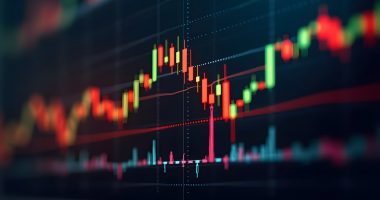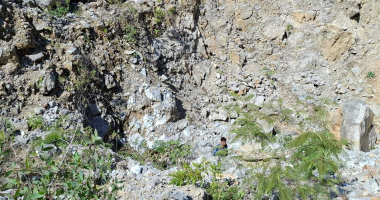While Australia’s equity market put in a general show of strength through 2024, recording an 11% return to the start of November (better than the 8% of the past 20 years), its various sectors have been pulled in different directions by both positive narratives and concerning headwinds coming from offshore.
And while some of the ‘headwind’ trends are likely to continue – notably, questions around the strength of the Chinese economy and closer to home, the drag of domestic inflation – there are new ones to consider, such as a new U.S. presidency led by Trump.
At the same time, the drive towards clean energy, and new technological offerings is also likely to influence equity markets, largely on the upside.
Talking to HotCopper, David Harvie – Country Head of Sales for Saxo Markets Australia – reflected on the equity market’s performance throughout 2024 and shared his predictions and advice heading into 2025.
The landscape faced by investors in 2024
Generally strong returns were the most obvious overall trend.
“Anytime, anywhere, if an investor could sit down and say they had achieved double-digit returns, including dividends, in a portfolio, that’s a positive from an absolute perspective,” Mr Harvie explained.
He added certain sectors – such as banking – had also enjoyed a positive run, but warned Aus equities had also been burdened by both national and international factors.
“There were some headwinds as well: Domestic inflation, which we’re all acutely aware of, [and] commodity prices struggled,” Mr Harvie said.
“Those iron ore prices that we all watch very closely struggled, China has had its concerns, and oil has really gone nowhere.”
Investors should also be aware that the size of the Australian equity market – and what it “doesn’t have much of,” according to Harvie – will also shape returns.
“While our tech sector did really well, it’s just not big enough to have a material impact on the broader returns,” he said.
“If we flip it and look to the U.S. as a prime example, they were two and a half times that – or 25% – and that’s on price, not including dividends.
“Japan was in the ’20s with its accommodative policies, and European defence stocks are another example I’d point out.”
Another ‘golden year,’ but watch other commodities closely
One trend that was likely to continue into ’25 was the strong performance of gold; supply of this commodity remained tight, Mr Harvie shared, expressing confidence in the possibility of silver outperforming expectations.
“The divergence between the two might be worth clicking on,” he said.
“On the negative side, unfortunately, we still see struggles for the Chinese economy and we see knock-on effects from that.
“We see a supply glut for oil – so those more traditional resources may struggle in the Australian context.”
However, a standout trend for investors to keep an eye on Down Under was the performance of metals associated with the ‘electrification of the globe,’ such as copper, lithium, and other critical minerals.
“I think a lot of investors are just focused on the demand piece, which seems to be very strong when it comes to electrification,” Mr Harvie continued.
“Lithium as an example is probably something that one would – also on the flipside – have a look at the supply equation and how that’s playing out.”
What to expect from the ‘Trump effect’
Of course, Australian and global equity markets ended 2024 with a striking influence to consider when it came to economic and political shifts, with Donald Trump becoming U.S. President for a second time.
Mr Harvie noted the moves and positioning seen on markets even before Trump’s second term began were noteworthy in themselves.
“Certainly in my lifetime I cannot recall in general media a more active conversation about an incoming President, so I think that’s instructive, and I think that goes beyond the personality, and more towards the potential policy,” he said.
“The second thing [to note] is arguably the ‘smart money’ – institutional money and retail money – has started to position portfolios ahead of the inauguration.
“So we’ve seen a tremendous run-up in Bitcoin, for example, we’ve seen a tremendous run-up in AI, albeit with some pullback with DeepSeek over the last week or so.”
Regarding the knock-on effects to the Aussie market of potential and already announced policies, tariffs with China were pointed out as a major issue.
“If we think about it from an Australian perspective, if all of a sudden an embargo or trade restriction around one of our largest partners China, what will be the knock-on effect for us,” Mr Harvie said.
“That could be quite a hindrance, again, when it comes to our resource-rich market.
“What will be the impact to labour markets is if there’s a reduction in immigration or indeed deportation… that’s something I would point to as well.”
What ‘Make America Great Again’ really means
At the same time, some of Trump’s policy pushes – such as the suggested annexation of Greenland – reflected more fundamental concerns about acquiring and retaining essential materials to facilitate growth in domestic energy resources.
“He’s talking about annexing Greenland. Why? Because of that critical minerals piece there,” Mr Harvie said.
“And when you pull all that back, ‘Make America Great Again’ is another way of saying, let’s bring sovereignty back home, let’s bring resource production back home, and make sure we’re self-sufficient as an economy.
“And that’s happening globally. The struggle for the Australian market is we just don’t have the scale to be able to do that – we are so reliant on our trading partners.
“An investor here should be quite careful and sector-specific for the Aussie market, but also as we say… turn one’s eyes abroad and start to look at those other global thematic, [the] industries and sectors which should probably benefit from Trump 2.0, and those other macro-economic factors.”
The international tech sector’s dramatic year
Turning to trends among global tech stocks, Mr Harvie highlighted the fascinating (or horrifying, depending on your perspective) story of Chinese AI startup DeepSeek, whose launch wiped out U.S. technology stocks including sector darling and market-leading marker Nvidia only a week ago.
The issue, he said, was that many of the top tech stocks were not prepared.
“Those stocks are almost priced for perfection… they’re priced for solid growth and lack of a player like DeepSeek coming along, and that’s a mini–Black Swan event,” he said.
“That’s why you saw prices take a tumble very quickly. On the flip side, 48 hours later, a reasonable amount of those prices has been made back.”
But the DeepSeek story might also give impetus to other companies wanting to jump into this space, he added.
“It also goes to the fact that where there’s super normal pricing power, we’re probably going to see – in fact, we’ve already started to see with DeepSeek – some of that attention towards [the narrative of] ‘how can other companies, other countries get in on the act?’,” Mr Harvie said.
For investors, such an event could provide guidance when it came to picking stocks.
“It’s back to investor basics 101: Where am I invested? What assets do I have? Where am I invested globally, and what themes do I subscribe to?” he added.
“That’s a top-down approach. The bottom-up approach is then obviously picking the stocks that live within that and ensuring that those stocks that one has picked represent an adequate proportion of one’s portfolio.
“If you’re over-indexing in Nvidia or whatever the case may be, you do run the risk of the next DeepSeek coming along and mucking around with your returns.”
Looking for the big trends worldwide
Looking at the equity market as a whole, Mr Harvie said the keyword – even if it was a tad overused – was “diversification.”
“I think that term gets thrown around a lot, and maybe as a trader or investor, we’re a bit blasé when we hear it,” he said.
“But if we think about it, how that translates is really tapping into what’s happening in the real world. What’s happening in the real world is nations are bringing capacity home, they’re bringing chip-making home, energy production home when they can, and that’s very relevant with large economies like the U.S.
“It’s also relevant in Europe: We’ve seen NATO countries leaning into their defence capacity on the back of what’s been happening with Russia, but also Trump coming in and demanding those countries spend an X amount of their GDP on defence, which is why we’ve seen that be such a strong performer globally in 2024.”
Alongside these macro themes would be the likely vibrant performance in precious metals, and the importance of energy sources and the stocks and sectors attached to that.
“My advice would be [to] go back to macroeconomics, look at those global themes and see how you can position your portfolio to best take advantage,” he said.
“Not just geographically on the map, but asking ‘where can I gain access to those underlying themes?’
“Then, look up and pick some individual stocks or ETFs from there.”
Join the discussion: See what’s trending right now on Australia’s largest stock forum and be part of the conversations that move the markets.
The material provided in this article is for information only and should not be treated as investment advice. Viewers are encouraged to conduct their own research and consult with a certified financial advisor before making any investment decisions. For full disclaimer information, please click here.






